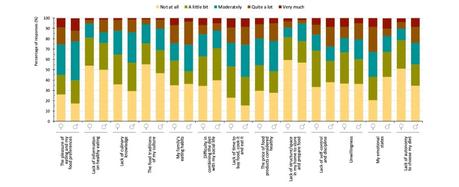This is evident from a recent study published in the journal Nutrients researchers examined the perceptions and barriers related to healthy eating among students in the Human Nutrition and Dietetics (HND) and Food Science and Technology (FST) programs in Spain.
They found differences in how men and women, as well as students at different academic stages, defined healthy eating, with key barriers including family eating patterns, time pressure and emotional states, highlighting the importance of addressing these perceptions in education of the future. professionals in the field of nutrition and food science.
Study: What is considered healthy eating? An exploratory study among food and nutrition science students. Image credits: udra11 / Shutterstock
Background
In modern industrialized societies, the discourse around healthy eating has intensified, fueled by concerns about changing demographics, increased obesity rates and the prevalence of cardiovascular disease.
Despite efforts by organizations such as the World Health Organization (WHO) and governments such as the European Union to promote healthy diets, there is no universal definition of what constitutes a healthy diet, with interpretations varying based on factors such as gender, age and cultural background. background.
Healthcare and nutrition professionals, including dietitians and nutrition scientists, play a critical role in promoting healthy eating. However, their perception of healthy eating can vary widely and can influence their practices.
Understanding these perceptions is critical, especially during their formative education, to ensure that academic programs adequately address diverse attitudes toward healthy eating.
About the study
This study explored the perceptions and barriers related to healthy eating among students in HND and FST programs at a Spanish university.
The study used an exploratory and descriptive cross-sectional design, combining qualitative and quantitative methodologies to understand students' perceptions of food and healthy eating.
A convenience sample of male and female students enrolled in the HND and FST programs at the University of Barcelona was selected. Data collection included a questionnaire based on previous research and focus group discussions.
Thematic analysis was conducted on focus group transcripts to identify key themes. The final questionnaire was administered online and yielded 300 complete responses.
Statistical analysis, conducted using SPSS, revealed significant differences in perception between gender and academic year groups.
Descriptive statistics, such as means and standard deviations, were used, and chi-square tests were used to determine significant differences in response frequencies at the 5% significance level.
Findings
The research revealed a number of important findings regarding students' perceptions of health, body and nutrition. The majority of students felt they were in good health and recognized the impact of food consumption on health.
Although most students perceived their diet as healthy, differences emerged between HND and FST students regarding the ease of maintaining a healthy diet and the importance of personal will in doing so.
HND students tended to believe their diets were healthier and easier to maintain compared to FST students, who placed more emphasis on personal willpower. Furthermore, significant differences were observed between gender and academic year groups in the perception of health, body image and barriers to adopting a healthy diet.
 Barriers to healthy eating based on gender.
Barriers to healthy eating based on gender.
Qualitatively, students emphasized the importance of variety, balance, moderation and personalization in healthy eating, often associating this with a Mediterranean diet and going beyond simply adhering to dietary guidelines.
However, some FST students highlighted a perceived conflict between healthy eating and personal pleasure, indicating a dichotomy between health and pleasure in food choices.
Quantitatively, statistical analysis revealed differences in the importance given to different factors of healthy eating between HND and FST students and between different academic years.
Furthermore, significant gender differences were found in the perception of barriers to adopting a healthy diet, with emotional states and autonomy to choose one's diet being more influential for women, while a lack of autonomy was more influential for men.
Overall, the research highlights the complexity of perceptions surrounding health, nutrition and barriers to healthy eating among students, highlighting the need for personalized approaches and tailored interventions to promote healthy eating practices.
Conclusions
The study examines the perception of healthy eating among HND and FST university students in Spain, highlighting the predominant belief in the healthfulness of their diets, especially among HND students.
It identifies a trend towards individual responsibility in dietary choices, influenced by societal norms and aesthetic ideals. While both groups prioritize balance and variety, FST students emphasize fresh and natural foods, while HND students value pleasure in eating.
Barriers to healthy eating include family habits, lack of time, and emotional states. The study suggests the need for critical examination of attitudes during student education and the development of strategies that address environmental and individual factors.
However, limitations include a single-institution sample and potential bias in data collection methods, suggesting a need for broader, more diverse research approaches in future studies.
Magazine reference:
